 Search by Keyword
|
“THE WORD”
(John Lennon – Paul McCartney)
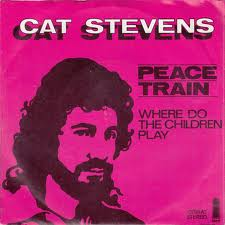 Throughout the last few decades, pop music has been periodically used as a platform for expressing a desire and optimism for universal peace and love. While numerous examples can be cited, the '70s seemed to have grabbed hold of this phenomenon. Todd Rundgren’s “Love Is The Answer,” Cat Stevens’s “Peace Train,” The O’Jays’ “Love Train” and, of course, John Lennon’s “Imagine” typify this hope for the future. The '80s even elevated this stance to the platform of inciting us to action, such as in “Do They Know It’s Christmas” and “We Are The World.” Throughout the last few decades, pop music has been periodically used as a platform for expressing a desire and optimism for universal peace and love. While numerous examples can be cited, the '70s seemed to have grabbed hold of this phenomenon. Todd Rundgren’s “Love Is The Answer,” Cat Stevens’s “Peace Train,” The O’Jays’ “Love Train” and, of course, John Lennon’s “Imagine” typify this hope for the future. The '80s even elevated this stance to the platform of inciting us to action, such as in “Do They Know It’s Christmas” and “We Are The World.”
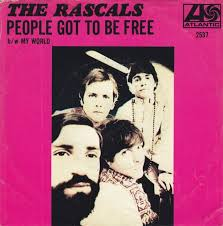 It’s easy to point back a little further to reveal the origins of this trend. The effects of “The Summer Of Love” propelled these sentiments seemingly for the first time with The Rascals’ “People Got To Be Free” and The Youngbloods' “Get Together” notably blasting this idealistic message from that generation’s transistor radios. And there probably aren’t many contesters to the fact that The Beatles were right there from the beginning pointing the direction with their anthem “All You Need Is Love,” echoed by John Lennon’s “Give Peace A Chance” two years later. It’s easy to point back a little further to reveal the origins of this trend. The effects of “The Summer Of Love” propelled these sentiments seemingly for the first time with The Rascals’ “People Got To Be Free” and The Youngbloods' “Get Together” notably blasting this idealistic message from that generation’s transistor radios. And there probably aren’t many contesters to the fact that The Beatles were right there from the beginning pointing the direction with their anthem “All You Need Is Love,” echoed by John Lennon’s “Give Peace A Chance” two years later.
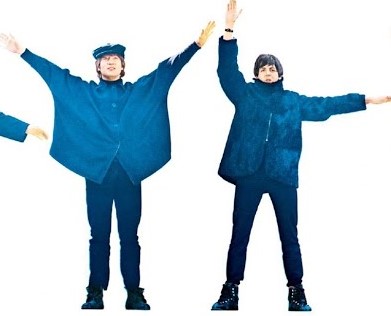 What Beatles enthusiasts will be quick to point out, however, is that they actually pre-dated 1967, the so-called “Summer Of Love,” by nearly two years. With amazing forethought, they spearheaded this movement with their first ever love song that spoke of a whole different kind of “love.” In December of 1965, John Lennon and Paul McCartney released a song that author Barry Miles (in the book "Many Years From Now") called “one of the first hippie anthems.” For the rest of the '60s and until this day, “The Word” was, and is, “love.” What Beatles enthusiasts will be quick to point out, however, is that they actually pre-dated 1967, the so-called “Summer Of Love,” by nearly two years. With amazing forethought, they spearheaded this movement with their first ever love song that spoke of a whole different kind of “love.” In December of 1965, John Lennon and Paul McCartney released a song that author Barry Miles (in the book "Many Years From Now") called “one of the first hippie anthems.” For the rest of the '60s and until this day, “The Word” was, and is, “love.”
Songwriting History
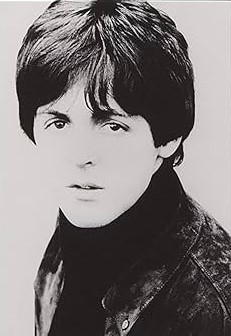 “To write a good song with just one note in it – like ‘Long Tall Sally’ – is really very hard. It’s the kind of thing we’ve wanted to do for some time. We get near it in ‘The Word.’” This quote from Paul McCartney in late 1965 shows an innocent intention in writing the song. But was it all this innocent? “To write a good song with just one note in it – like ‘Long Tall Sally’ – is really very hard. It’s the kind of thing we’ve wanted to do for some time. We get near it in ‘The Word.’” This quote from Paul McCartney in late 1965 shows an innocent intention in writing the song. But was it all this innocent?
Notice the reference that John Lennon adds when asked about the song in his 1980 Playboy interview: “You read the words, it’s all about getting smart. It’s the marijuana period. It’s love. It’s a love and peace thing. The word is ‘love,’ right?”
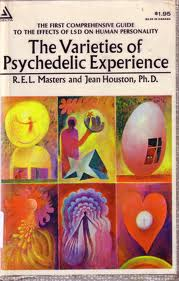 As history shows, “love” became the buzz word of the psychedelic era, which apparently wasn’t an accident. The realization that “a universal or brotherly love is possible and constitutes man’s best if not only hope,” according to the Masters and Houston study entitled “The Varieties Of Psychedelic Experience,” was shown to be the result of drugs such as LSD, which John and George had already experienced numerous times by November of 1965. It is readily accepted from all sources that drug use was very prevalent in The Beatles lives during the making of this album. "'Rubber Soul’ was the first one where we were fully-fledged potheads," George Harrison admits. As history shows, “love” became the buzz word of the psychedelic era, which apparently wasn’t an accident. The realization that “a universal or brotherly love is possible and constitutes man’s best if not only hope,” according to the Masters and Houston study entitled “The Varieties Of Psychedelic Experience,” was shown to be the result of drugs such as LSD, which John and George had already experienced numerous times by November of 1965. It is readily accepted from all sources that drug use was very prevalent in The Beatles lives during the making of this album. "'Rubber Soul’ was the first one where we were fully-fledged potheads," George Harrison admits.
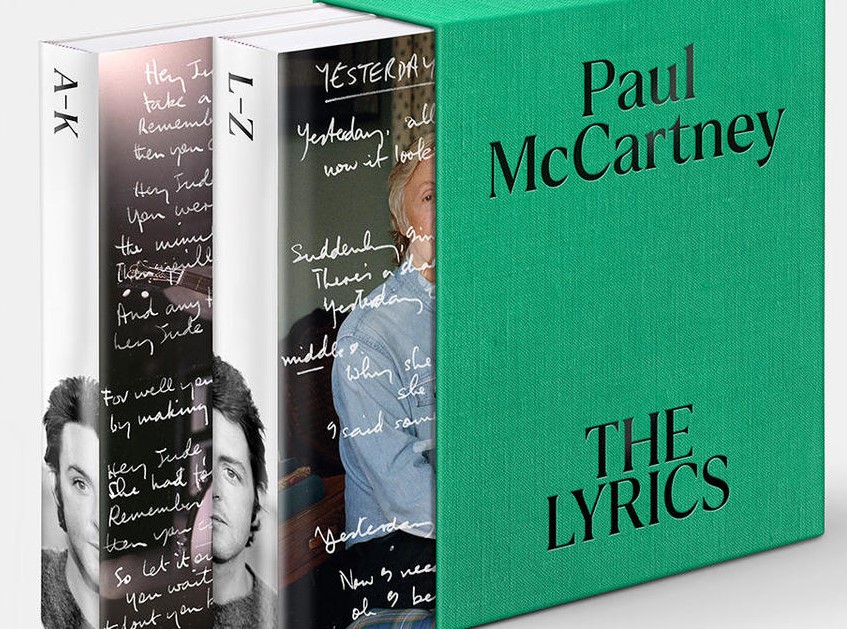 This is not to say that the song was written while they were under its influence. Paul explains, "We normally didn’t smoke when we were working. It got in the way of songwriting because it would just cloud your mind up – ‘Oh, s**t, what are we doing?’ It’s better to be straight." In his 2021 book "The Lyrics," Paul explains their current state of mind slightly differently. "Normally we didn't write while we were actually high. There was only one song where that happened. It was called 'The Word,' but I didn't think it was that good. I'm not even sure we wrote it while stoned. Though we probably got stoned after it." This is not to say that the song was written while they were under its influence. Paul explains, "We normally didn’t smoke when we were working. It got in the way of songwriting because it would just cloud your mind up – ‘Oh, s**t, what are we doing?’ It’s better to be straight." In his 2021 book "The Lyrics," Paul explains their current state of mind slightly differently. "Normally we didn't write while we were actually high. There was only one song where that happened. It was called 'The Word,' but I didn't think it was that good. I'm not even sure we wrote it while stoned. Though we probably got stoned after it."
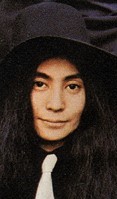 One thing that is confirmed is that, when the song was finished, they celebrated the event with what was its chief inspiration. “We smoked a bit of pot, then we wrote out a multicolored lyric sheet, the first time we’d ever done that.” As explained in Paul’s book “Many Years From Now,” Yoko Ono visited Paul’s house in 1966 to ask for a song manuscript to give as a Birthday present to American composer and poet John Cage. While Paul declined the proposal, John handed over his copy of this multicolored lyric sheet for “The Word.” One thing that is confirmed is that, when the song was finished, they celebrated the event with what was its chief inspiration. “We smoked a bit of pot, then we wrote out a multicolored lyric sheet, the first time we’d ever done that.” As explained in Paul’s book “Many Years From Now,” Yoko Ono visited Paul’s house in 1966 to ask for a song manuscript to give as a Birthday present to American composer and poet John Cage. While Paul declined the proposal, John handed over his copy of this multicolored lyric sheet for “The Word.”
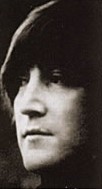 As for a deeper explanation of the lyrics, John relates: “It sort of dawned on me that love was the answer, when I was younger, on the ‘Rubber Soul’ album. My first expression of it was a song called ‘The Word.’ The word is ‘love.’ ‘In the good and the bad books that I have read,’ whatever, wherever, the word is ‘love.’ It seems like the underlying theme to the universe. Everything that was worthwhile got down to this love, love, love thing. And it is the struggle to love, be loved and express that (just something about love) that’s fantastic. I think that whatever else love is – and it’s many, many things – it is constant. It’s been the same forever. I don’t think it will ever change. Even though I’m not always a loving person, I want to be that, I want to be as loving as possible.” As for a deeper explanation of the lyrics, John relates: “It sort of dawned on me that love was the answer, when I was younger, on the ‘Rubber Soul’ album. My first expression of it was a song called ‘The Word.’ The word is ‘love.’ ‘In the good and the bad books that I have read,’ whatever, wherever, the word is ‘love.’ It seems like the underlying theme to the universe. Everything that was worthwhile got down to this love, love, love thing. And it is the struggle to love, be loved and express that (just something about love) that’s fantastic. I think that whatever else love is – and it’s many, many things – it is constant. It’s been the same forever. I don’t think it will ever change. Even though I’m not always a loving person, I want to be that, I want to be as loving as possible.”
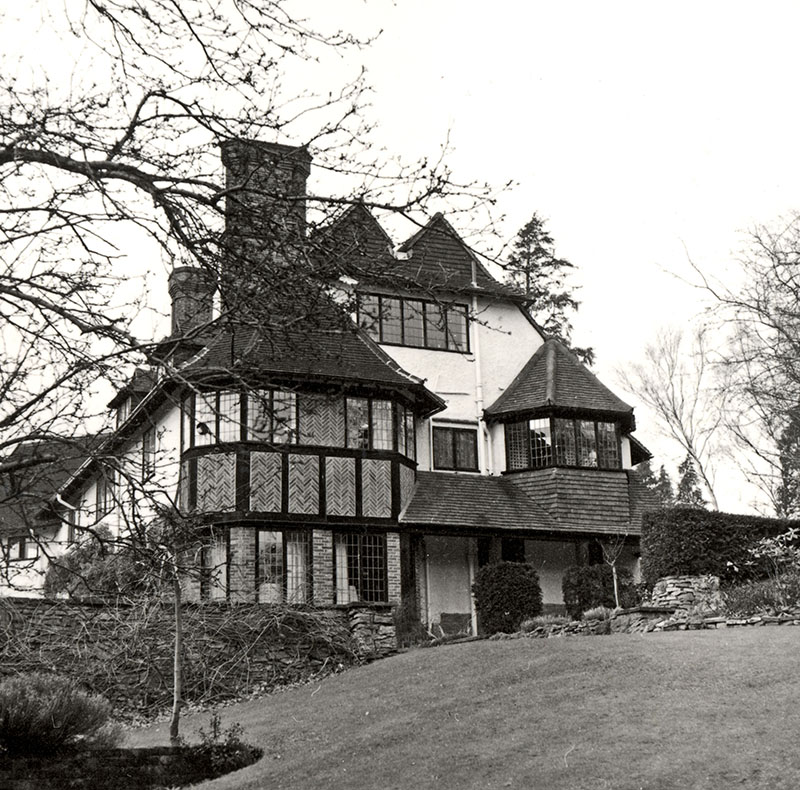 As implied by Paul above, John clarifies that the song was indeed a collaborative effort. “’The Word’ was written together, but it’s mainly mine,” he said in 1980. Since it was recorded toward the end of the sessions that became the “Rubber Soul” album, the song was probably recently written during the months of October and November of 1965. As were many of their collaborations during that time period, it no doubt was written at John’s Kenwood home where they then proceeded to smoke a joint afterwards. As implied by Paul above, John clarifies that the song was indeed a collaborative effort. “’The Word’ was written together, but it’s mainly mine,” he said in 1980. Since it was recorded toward the end of the sessions that became the “Rubber Soul” album, the song was probably recently written during the months of October and November of 1965. As were many of their collaborations during that time period, it no doubt was written at John’s Kenwood home where they then proceeded to smoke a joint afterwards.
Recording History
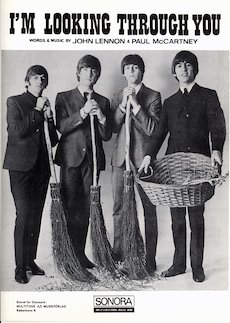 There were a total of fifteen recording sessions instituted in the latter half of 1965 to record the entire “Rubber Soul” album (which also included their end-of-the-year single). “The Word” was recorded on November 10th of that year, which was the fourteenth of those sessions. While a couple stereo mixes of previously recorded tracks were made in the late afternoon, The Beatles arrived at 9 pm for an evening recording session that lasted until 4 the next morning. Approximately the first five of these seven hours were utilized to fully record “The Word,” while the final two hours resulted in the rhythm track of “I’m Looking Through You” being finally completed to everyone’s satisfaction, this being the third of four sessions needed to record that song. There were a total of fifteen recording sessions instituted in the latter half of 1965 to record the entire “Rubber Soul” album (which also included their end-of-the-year single). “The Word” was recorded on November 10th of that year, which was the fourteenth of those sessions. While a couple stereo mixes of previously recorded tracks were made in the late afternoon, The Beatles arrived at 9 pm for an evening recording session that lasted until 4 the next morning. Approximately the first five of these seven hours were utilized to fully record “The Word,” while the final two hours resulted in the rhythm track of “I’m Looking Through You” being finally completed to everyone’s satisfaction, this being the third of four sessions needed to record that song.
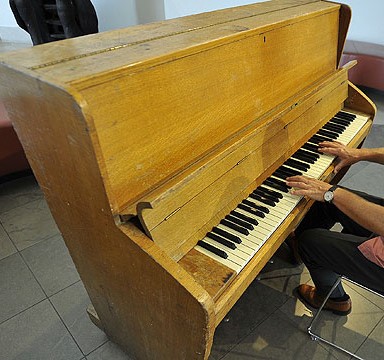 After some rehearsal, three takes of the rhythm track were then recorded before they finally nailed it, “take three” being the best. The rhythm track consisted of Paul on piano, John on rhythm guitar chops, George on lead guitar and Ringo as usual on drums. After some rehearsal, three takes of the rhythm track were then recorded before they finally nailed it, “take three” being the best. The rhythm track consisted of Paul on piano, John on rhythm guitar chops, George on lead guitar and Ringo as usual on drums.
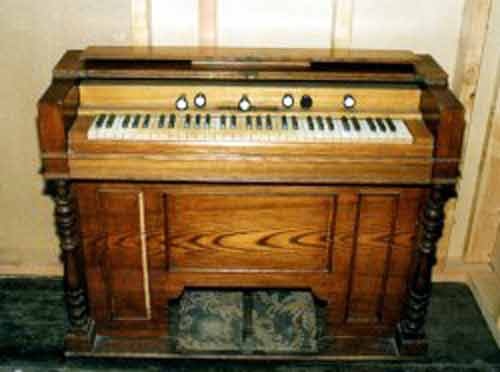 A number of overdubs were performed to complete the song as we know it. Paul overdubbed his playful bass guitar part, Ringo did two separate maraca overdubs (noticeable in the 2009 remastered stereo CD) and producer George Martin added a somewhat menacing Harmonium part during the instrumental section and conclusion of the song. A number of overdubs were performed to complete the song as we know it. Paul overdubbed his playful bass guitar part, Ringo did two separate maraca overdubs (noticeable in the 2009 remastered stereo CD) and producer George Martin added a somewhat menacing Harmonium part during the instrumental section and conclusion of the song.
 Quite a lot of vocal work was recorded as overdubs as well. Two sets of harmonies by John, Paul and George were recorded, the first being sung in normal register and the second sung in falsetto during the last two verses. Paul even added another falsetto harmony on these verses during the maraca / harmonium overdub. John also added his lead vocals as an overdub and then double-tracked them as well. All in all, there appears to be a total of nine voices overdubbed onto the rhythm track to achieve what we hear in the final version. Quite a lot of vocal work was recorded as overdubs as well. Two sets of harmonies by John, Paul and George were recorded, the first being sung in normal register and the second sung in falsetto during the last two verses. Paul even added another falsetto harmony on these verses during the maraca / harmonium overdub. John also added his lead vocals as an overdub and then double-tracked them as well. All in all, there appears to be a total of nine voices overdubbed onto the rhythm track to achieve what we hear in the final version.
 However, what you consider to be the final version may not be what someone else considers the final version. The mono mix and the first stereo mix were made the following day, November 11th, 1965, in Room 65 of EMI Studios by George Martin and engineers Norman Smith and Mike Stone. While the mono mix has single-tracked lead vocals from John, this stereo mix features both of John’s lead vocal tracks. Paul’s solo falsetto harmony in the final two verses is the only vocal that can be heard on the left channel while all of the other vocals are panned fully to the right channel. However, what you consider to be the final version may not be what someone else considers the final version. The mono mix and the first stereo mix were made the following day, November 11th, 1965, in Room 65 of EMI Studios by George Martin and engineers Norman Smith and Mike Stone. While the mono mix has single-tracked lead vocals from John, this stereo mix features both of John’s lead vocal tracks. Paul’s solo falsetto harmony in the final two verses is the only vocal that can be heard on the left channel while all of the other vocals are panned fully to the right channel.
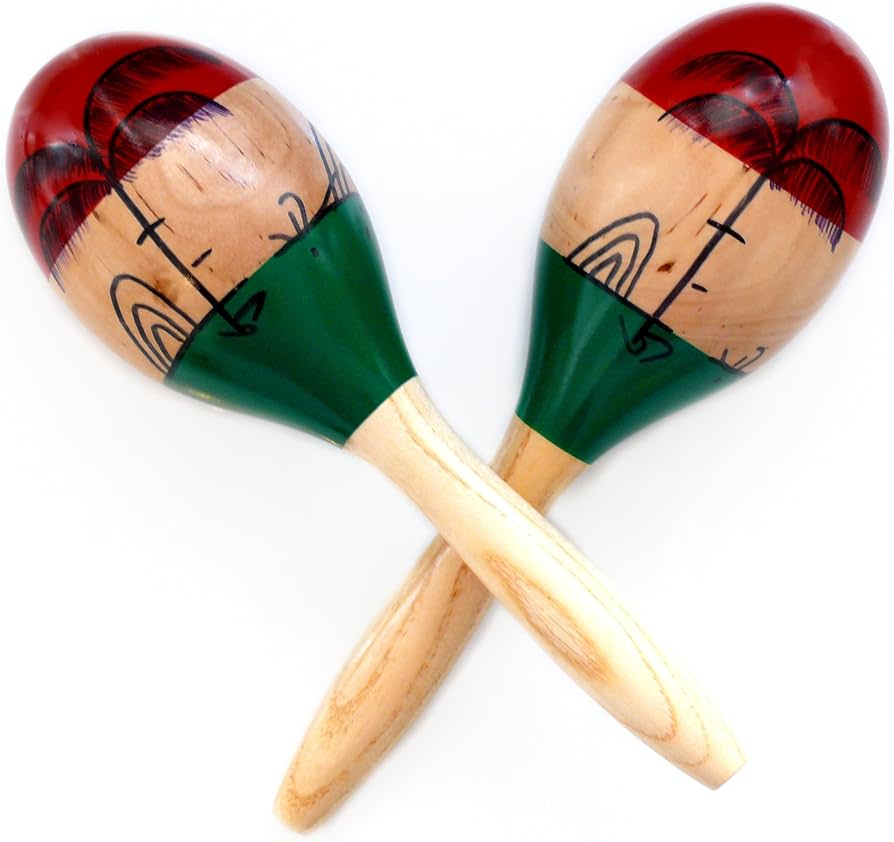 The EMI staff desired the harmonium overdub to appear on the right channel so, when these parts appeared in the song, they panned it there. However, one of the maraca parts and Paul’s falsetto vocals were also on this track, so when the harmonium appears in the right channel, the maracas also move there from the left track where they were placed for the rest of the song. The EMI staff desired the harmonium overdub to appear on the right channel so, when these parts appeared in the song, they panned it there. However, one of the maraca parts and Paul’s falsetto vocals were also on this track, so when the harmonium appears in the right channel, the maracas also move there from the left track where they were placed for the rest of the song.
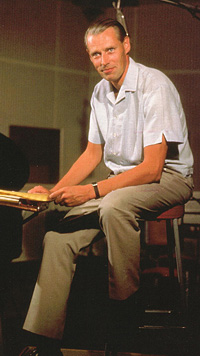 This stereo mix was sent to America and appears on the stereo copies of the “Rubber Soul” album. However, George Martin wanted to improve on this stereo mix and created a new one on November 15th, 1965 in control room of EMI Studio One with Richard Lush replacing Mike Stone as 2nd engineer. This is the stereo mix that appeared on the British album. This stereo mix was sent to America and appears on the stereo copies of the “Rubber Soul” album. However, George Martin wanted to improve on this stereo mix and created a new one on November 15th, 1965 in control room of EMI Studio One with Richard Lush replacing Mike Stone as 2nd engineer. This is the stereo mix that appeared on the British album.
Many differences between the two stereo mixes can be detected. Most noticeable is that the first set of vocal harmonies is in the left channel while the second falsetto set (including Paul’s solo falsetto) is in the right channel. John’s lead vocals are still double-tracked but, instead of them both appearing on the same channel as on the November 11th, 1965 stereo mix, this time each of John's lead vocals appear on opposite channels. Therefore, one lead vocal appears on the stereo channel with the percussion while the other appears on the stereo channel with the rhythm track instruments. Another difference is that Paul’s bass guitar is panned to the right channel this time so you can hear it better.
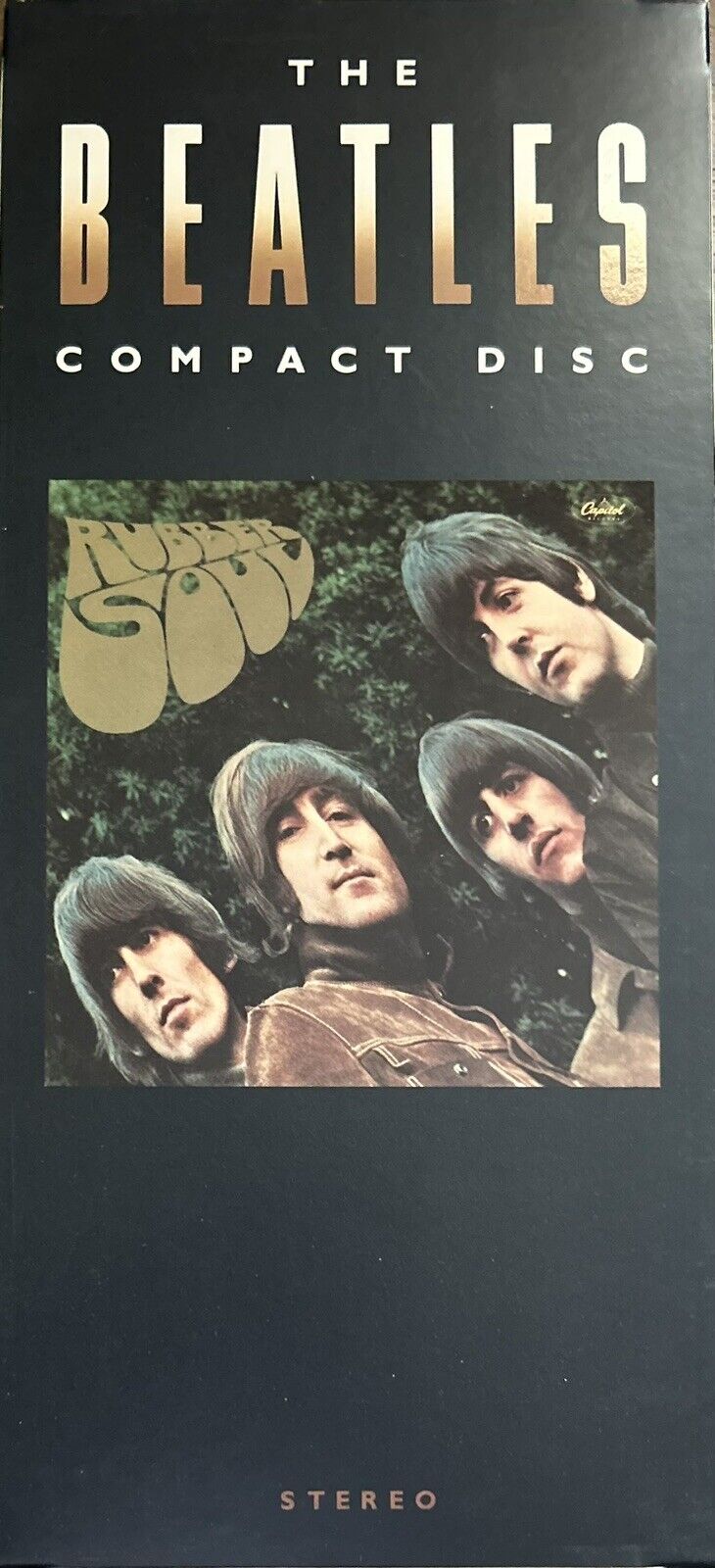 George Martin returned to the master tape of “The Word” to create a new stereo mix in 1986 for the first compact disc release of “Rubber Soul” in 1987. He mimicked the November 15th, 1965 mix very closely, so the stereo mix originally heard in the US was all but lost for quite a long time. George Martin returned to the master tape of “The Word” to create a new stereo mix in 1986 for the first compact disc release of “Rubber Soul” in 1987. He mimicked the November 15th, 1965 mix very closely, so the stereo mix originally heard in the US was all but lost for quite a long time.
Song Structure and Style
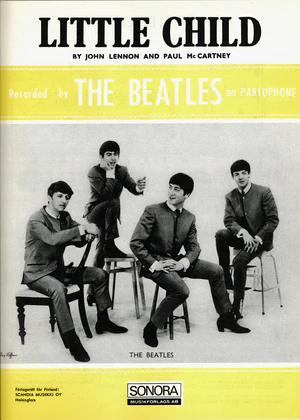 The format used for this song consists of verses and bridges, which has been ultra common throughout The Beatles catalog up to this point. However, there is a strikingly unique similarity between this song and their 1963 sleeper “Little Child” that may surprise many. The verses in both of these songs contain all the harmonies while the bridges are sung solo by John. Also, the usual pattern for bridges in Beatles songs stipulates that the lyrics are identical whenever the bridge is repeated. However, with both of these tracks, the lyrics are different each time the bridge occurs, “The Word” having THREE bridges all with unique lyrics. The format used for this song consists of verses and bridges, which has been ultra common throughout The Beatles catalog up to this point. However, there is a strikingly unique similarity between this song and their 1963 sleeper “Little Child” that may surprise many. The verses in both of these songs contain all the harmonies while the bridges are sung solo by John. Also, the usual pattern for bridges in Beatles songs stipulates that the lyrics are identical whenever the bridge is repeated. However, with both of these tracks, the lyrics are different each time the bridge occurs, “The Word” having THREE bridges all with unique lyrics.
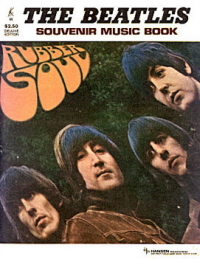 This being said, the actual structure of “The Word,” after a short introduction, is ‘verse/ bridge/ verse/ bridge/ verse/ bridge/ verse/ bridge (instrumental)/ verse/ bridge (instrumental)’ (or ababababa). This being said, the actual structure of “The Word,” after a short introduction, is ‘verse/ bridge/ verse/ bridge/ verse/ bridge/ verse/ bridge (instrumental)/ verse/ bridge (instrumental)’ (or ababababa).
Since Paul is playing the piano on the rhythm track, he does the honors of counting out the song with a simple half-measure keyboard vamp to set the tempo. A two-measure introduction proceeds to get the ball rolling, which features nearly the full instrumentation of the song; namely the drums, bass, piano, maracas and Lennon’s guitar chops.
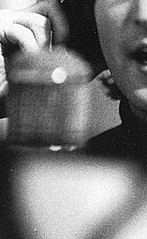 The first verse is a standard twelve measures long and pretty much follows the established “12 bar blues” chord sequence. The two sets of harmonies (one in the left channel and the other in the right on the common stereo mix) kick in just prior to the first measure and continue throughout the entire verse. The vocals maintain a pattern that consists of a three-note rise and then a three-note descent throughout the first eight measures even though the chord changes underneath it in the fifth and sixth measures. The arrangement alters in the ninth and tenth measures as the piano interrupts its usual “oom-pah” style to hit four strident chords that are syncopated slightly to mimic the vocals on the lyrics “so fine” and “sunshine.” The first verse is a standard twelve measures long and pretty much follows the established “12 bar blues” chord sequence. The two sets of harmonies (one in the left channel and the other in the right on the common stereo mix) kick in just prior to the first measure and continue throughout the entire verse. The vocals maintain a pattern that consists of a three-note rise and then a three-note descent throughout the first eight measures even though the chord changes underneath it in the fifth and sixth measures. The arrangement alters in the ninth and tenth measures as the piano interrupts its usual “oom-pah” style to hit four strident chords that are syncopated slightly to mimic the vocals on the lyrics “so fine” and “sunshine.”
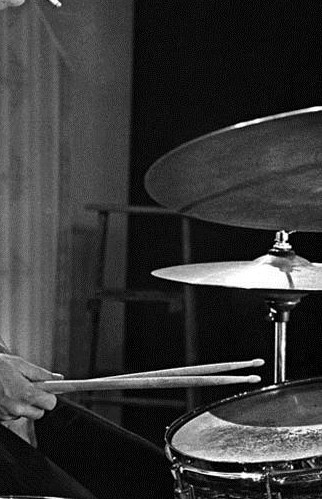 The guitar plays a single note descending scale on these same beats while the maracas shake violently to make this part stand out. Ringo also crashes his cymbals on these same beats and performs a rapid fire five-beat roll on his snare after each phrase. The final two measures of the verse resume the instrumental and vocal pattern heard in the first two measures of the verse with Ringo segueing into the upcoming bridge with one of his trademark backward drum fills. The guitar plays a single note descending scale on these same beats while the maracas shake violently to make this part stand out. Ringo also crashes his cymbals on these same beats and performs a rapid fire five-beat roll on his snare after each phrase. The final two measures of the verse resume the instrumental and vocal pattern heard in the first two measures of the verse with Ringo segueing into the upcoming bridge with one of his trademark backward drum fills.
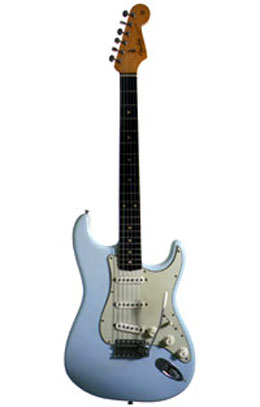 The first four-measure bridge introduces George Harrison’s clever guitar passage that is repeated identically four times even though the chords change in each measure. John sings the bridge solo single-tracked (double-tracked in the early stereo mix) while the piano plays chords on each quarter note and Ringo hits his open hi-hat on the same beats. This combination does wonders to highlight John’s confessional lyrics and George’s menacing guitar riff. The first four-measure bridge introduces George Harrison’s clever guitar passage that is repeated identically four times even though the chords change in each measure. John sings the bridge solo single-tracked (double-tracked in the early stereo mix) while the piano plays chords on each quarter note and Ringo hits his open hi-hat on the same beats. This combination does wonders to highlight John’s confessional lyrics and George’s menacing guitar riff.
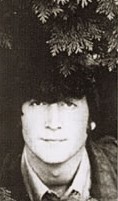 A second verse is then heard, which is technically the same as the first but with subtle differences. First of all, the lyrics are changed to “spread the word” instead of “say the word” as heard the first time around. John accidentally misses one of his guitar chops in the third measure, the one that should have occurred on the lyric “spread the word and be like me.” A second verse is then heard, which is technically the same as the first but with subtle differences. First of all, the lyrics are changed to “spread the word” instead of “say the word” as heard the first time around. John accidentally misses one of his guitar chops in the third measure, the one that should have occurred on the lyric “spread the word and be like me.”
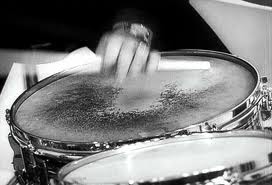 A second bridge with different lyrics then occurs, which is otherwise identical in arrangement to the first. An interesting feature here is John’s rushing through the line “in the good and the bad books” with fast triplets, which is not heard anywhere else in the song. The third verse repeats the “say the word” lyrics and shows Ringo playing two flams on his snare drum in a slow triplet form after the words “so fine.” Thereafter, he repeats his fast five-note snare fill after the lyric “sunshine.” A second bridge with different lyrics then occurs, which is otherwise identical in arrangement to the first. An interesting feature here is John’s rushing through the line “in the good and the bad books” with fast triplets, which is not heard anywhere else in the song. The third verse repeats the “say the word” lyrics and shows Ringo playing two flams on his snare drum in a slow triplet form after the words “so fine.” Thereafter, he repeats his fast five-note snare fill after the lyric “sunshine.”
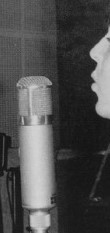 After a third structurally identical bridge the fourth verse begins, which has a few subtle differences. The second set of harmonies (in the right channel of the common stereo mix) jumps into falsetto. The lyrics also consist of a substantial variation from the other verses, the only one thus far not to highlight how you’ll “be free” and “be like me.” Instead they insist that “the only word is love.” Ringo appears tired of playing the same fills in the ninth and tenth measures, so he simply plays a flam on the floor tom once in the first break and does a slow triplet fill on the snare and mounted tom in the second. After a third structurally identical bridge the fourth verse begins, which has a few subtle differences. The second set of harmonies (in the right channel of the common stereo mix) jumps into falsetto. The lyrics also consist of a substantial variation from the other verses, the only one thus far not to highlight how you’ll “be free” and “be like me.” Instead they insist that “the only word is love.” Ringo appears tired of playing the same fills in the ninth and tenth measures, so he simply plays a flam on the floor tom once in the first break and does a slow triplet fill on the snare and mounted tom in the second.
 We now enter into another bridge, but this time it’s entirely instrumental. George Martin enters the picture just before the bridge with a treble-heavy harmonium which he plays throughout this section and into the first two measures of the verse that follows. Lucky for us, this ear-piercing sound is panned exclusively to the right channel (in both stereo mixes) and mostly consists of a single chord with a couple stray fingering changes to add some variance. Since John doesn’t sing during this bridge, we can easily distinguish George’s clever guitar fills which are panned to the left channel. We now enter into another bridge, but this time it’s entirely instrumental. George Martin enters the picture just before the bridge with a treble-heavy harmonium which he plays throughout this section and into the first two measures of the verse that follows. Lucky for us, this ear-piercing sound is panned exclusively to the right channel (in both stereo mixes) and mostly consists of a single chord with a couple stray fingering changes to add some variance. Since John doesn’t sing during this bridge, we can easily distinguish George’s clever guitar fills which are panned to the left channel.
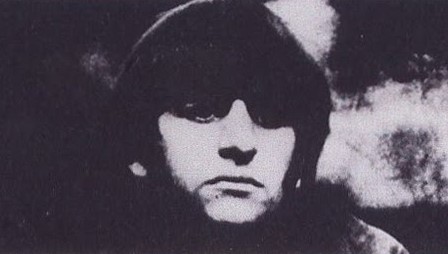 The final verse then appears with falsetto harmonies still in place, although this time the lyrics entirely consist of the phrase “say the word love.” This is repeated four times, the fourth with the word “word” stretched out for the entire ninth and tenth measures. Ringo repeats the drum pattern of the third verse, this being two flams in a slow triplet form and then a fast five-note snare drum fill. After this we hear a repeat of the instrumental bridge with the harmonium in all its glory, although it is faded out rather quickly to disguise the fact that the musicians actually stopped the song at the end of the bridge. The final verse then appears with falsetto harmonies still in place, although this time the lyrics entirely consist of the phrase “say the word love.” This is repeated four times, the fourth with the word “word” stretched out for the entire ninth and tenth measures. Ringo repeats the drum pattern of the third verse, this being two flams in a slow triplet form and then a fast five-note snare drum fill. After this we hear a repeat of the instrumental bridge with the harmonium in all its glory, although it is faded out rather quickly to disguise the fact that the musicians actually stopped the song at the end of the bridge.
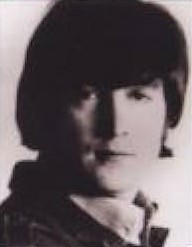 Although John’s musical contribution to “The Word” may have been minimal, he shows himself as the song’s primary spokesman by singing solo during the bridges. With lyrics like “I’m here to show everybody the light,” the evidence suggests this as being John’s song entirely when, as stated above, it was truly a collaboration with Paul. The commanding presence of John’s electric guitar chops, however, makes for an interesting element of a detailed arrangement. Although John’s musical contribution to “The Word” may have been minimal, he shows himself as the song’s primary spokesman by singing solo during the bridges. With lyrics like “I’m here to show everybody the light,” the evidence suggests this as being John’s song entirely when, as stated above, it was truly a collaboration with Paul. The commanding presence of John’s electric guitar chops, however, makes for an interesting element of a detailed arrangement.
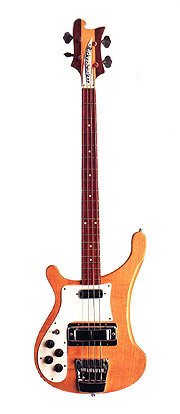 For sheer degree of involvement, Paul definitely shines as the man who holds the entire song together. His rhythmic piano work propels the track as does his intricate bass guitar groove that comes alive in the right channel of the popular second stereo mix (the first stereo mix buries this magnificent performance in the left channel with the rhythm track). His bass work is evidence of their intended premise for the “Rubber Soul” album, namely to emphasize American soul music. Although cracking at times, Paul’s layers of harmonies work well to fill out the arrangement. For sheer degree of involvement, Paul definitely shines as the man who holds the entire song together. His rhythmic piano work propels the track as does his intricate bass guitar groove that comes alive in the right channel of the popular second stereo mix (the first stereo mix buries this magnificent performance in the left channel with the rhythm track). His bass work is evidence of their intended premise for the “Rubber Soul” album, namely to emphasize American soul music. Although cracking at times, Paul’s layers of harmonies work well to fill out the arrangement.
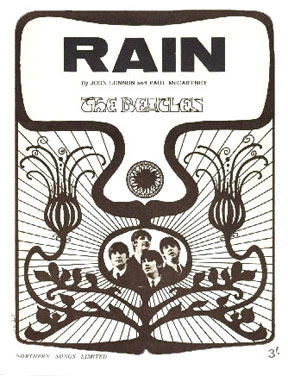 George Harrison’s primary contribution to “The Word” is his expertly performed guitar riff which is repeatedly played in every bridge, along with his less distinguished vocal harmonies during the verses. Ringo puts in one of his best performances to date, due in part to the engineers keeping the drum kit high in the mix when the rhythm track was performed. Starr's flamboyant backward drum fills, starting with the left hand but being played on a right-handed set up (Ringo was left-handed), will be heard even more frequently as The Beatles career progresses, such as his work on the following year's “Rain.” George Harrison’s primary contribution to “The Word” is his expertly performed guitar riff which is repeatedly played in every bridge, along with his less distinguished vocal harmonies during the verses. Ringo puts in one of his best performances to date, due in part to the engineers keeping the drum kit high in the mix when the rhythm track was performed. Starr's flamboyant backward drum fills, starting with the left hand but being played on a right-handed set up (Ringo was left-handed), will be heard even more frequently as The Beatles career progresses, such as his work on the following year's “Rain.”
 John Lennon had been mostly showing himself as the vulnerable or disheartened singer/songwriter as of late, but he adds a new persona to his arsenal with “The Word.” John is now the self-proclaimed guru that has discovered the meaning of life and has taken it upon himself to make his adoring fans aware of it. “I’m here to show everybody the light,” he preaches. His consistent sly charm over the past few years, though, keeps everybody on the edge of their seat instead of rolling their eyes. John Lennon had been mostly showing himself as the vulnerable or disheartened singer/songwriter as of late, but he adds a new persona to his arsenal with “The Word.” John is now the self-proclaimed guru that has discovered the meaning of life and has taken it upon himself to make his adoring fans aware of it. “I’m here to show everybody the light,” he preaches. His consistent sly charm over the past few years, though, keeps everybody on the edge of their seat instead of rolling their eyes.
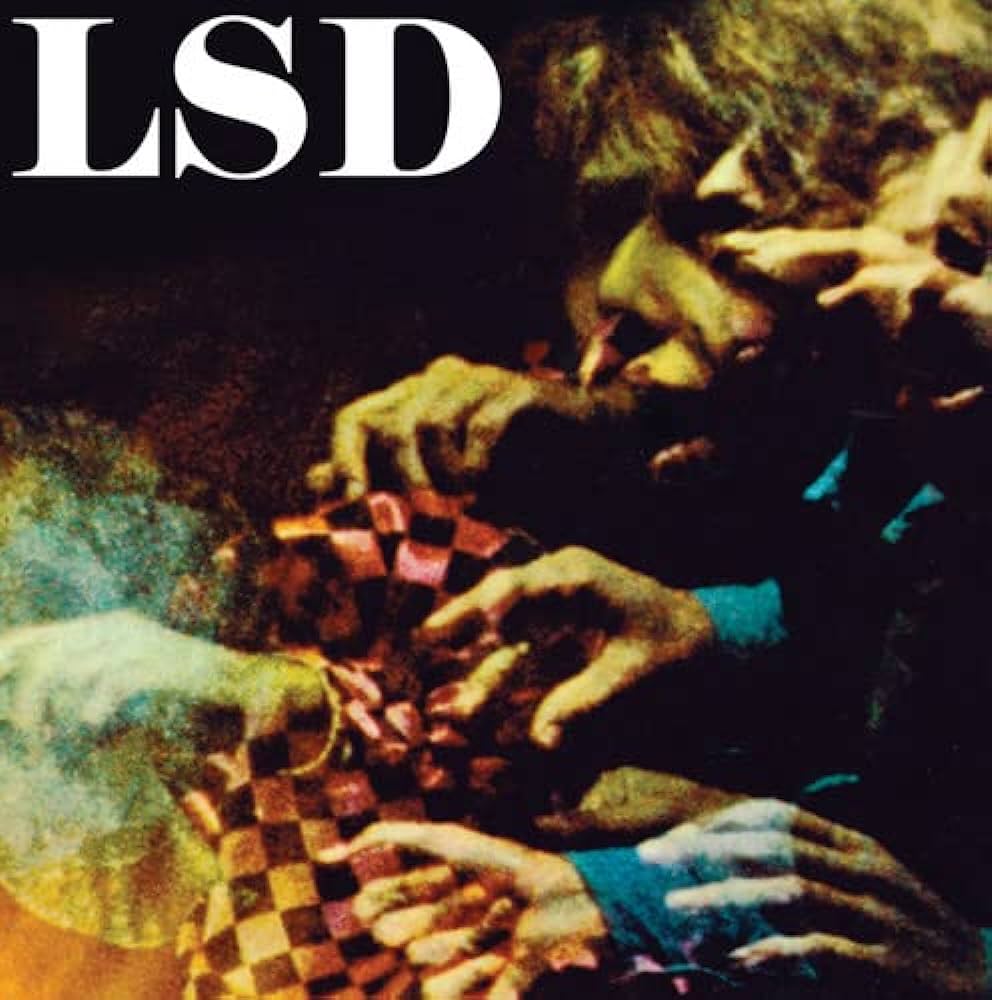 The message Lennon shares was right before his eyes all along, him stating “In the beginning I misunderstood.” But now with his added insight (and/or LSD), he realizes “but now I’ve got it.” The promise is that “you’ll be free” if you “say the word.” His admonition will even fulfill the desire to “be like me,” which is something every 1965 Beatlemaniac would most definitely want. However, one mustn’t keep this new knowledge to oneself; we all must “spread the word” as well. The message Lennon shares was right before his eyes all along, him stating “In the beginning I misunderstood.” But now with his added insight (and/or LSD), he realizes “but now I’ve got it.” The promise is that “you’ll be free” if you “say the word.” His admonition will even fulfill the desire to “be like me,” which is something every 1965 Beatlemaniac would most definitely want. However, one mustn’t keep this new knowledge to oneself; we all must “spread the word” as well.
His disciples (ahem…background singers) chant for us to “give the word a chance.” After all, “the only word is love” anyway. It’s as pure and enlightening as “sunshine,” so it “must be right.”
American Releases
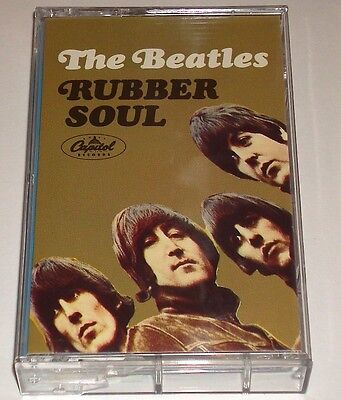 December 6th, 1965, was when America was duly informed that “The Word” is love, this being the date that the album “Rubber Soul” was released in the US. The first stereo mix, with the majority of the vocals on the right channel and the majority of the instruments on the left, was included therein. Six million copies sold in America meant that we all were poised to take on “The Summer Of Love” in another year or so. Capitol's version of "Rubber Soul" was released on an individual compact disc on January 21st, 2014, both the mono and stereo versions of the album contained on a single CD. December 6th, 1965, was when America was duly informed that “The Word” is love, this being the date that the album “Rubber Soul” was released in the US. The first stereo mix, with the majority of the vocals on the right channel and the majority of the instruments on the left, was included therein. Six million copies sold in America meant that we all were poised to take on “The Summer Of Love” in another year or so. Capitol's version of "Rubber Soul" was released on an individual compact disc on January 21st, 2014, both the mono and stereo versions of the album contained on a single CD.
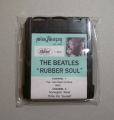 Sometime in 1967, Capitol released Beatles music on a brand new but short-lived format called "Playtapes." These tape cartridges did not have the capability to include entire albums, so two truncated four-song versions of "Rubber Soul" were released in this portable format, "The Word" being on one of these. All Beatles "Playtapes" are highly collectable today. Sometime in 1967, Capitol released Beatles music on a brand new but short-lived format called "Playtapes." These tape cartridges did not have the capability to include entire albums, so two truncated four-song versions of "Rubber Soul" were released in this portable format, "The Word" being on one of these. All Beatles "Playtapes" are highly collectable today.
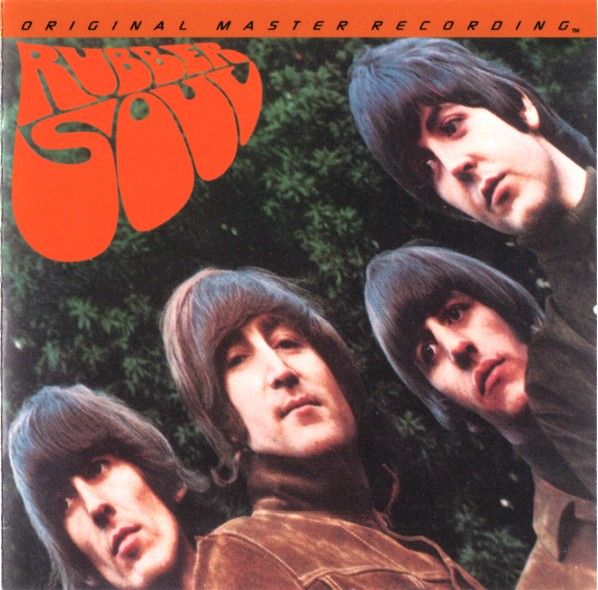 The first time the original British "Rubber Soul” album was made available in America was the "Original Master Recording" vinyl edition that was released through Mobile Fidelity Sound Lab in June of 1984. This album included "The Word" and was prepared utilizing half-speed mastering technology from the original master tape on loan from EMI. This version of the album was only available for a short time and is quite collectible today. The first time the original British "Rubber Soul” album was made available in America was the "Original Master Recording" vinyl edition that was released through Mobile Fidelity Sound Lab in June of 1984. This album included "The Word" and was prepared utilizing half-speed mastering technology from the original master tape on loan from EMI. This version of the album was only available for a short time and is quite collectible today.
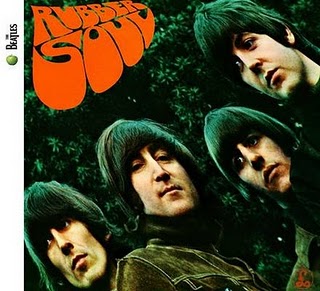 The British “Rubber Soul” configuration was then released on compact disc on April 30th, 1987 and on vinyl on July 21st, 1987, these releases including the newly mixed 1986 version of the song. This stereo mix mimicked the second 1965 stereo mix that was released in Britain, with the harmony vocals split between the two channels and the bass guitar on the right channel. Therefore, the first stereo mix could only be heard on the original US album for the time being. This album was then remastered and re-released on CD on September 9th, 2009 and on vinyl on November 13th, 2012 using the same 1986 George Martin mix. The British “Rubber Soul” configuration was then released on compact disc on April 30th, 1987 and on vinyl on July 21st, 1987, these releases including the newly mixed 1986 version of the song. This stereo mix mimicked the second 1965 stereo mix that was released in Britain, with the harmony vocals split between the two channels and the bass guitar on the right channel. Therefore, the first stereo mix could only be heard on the original US album for the time being. This album was then remastered and re-released on CD on September 9th, 2009 and on vinyl on November 13th, 2012 using the same 1986 George Martin mix.
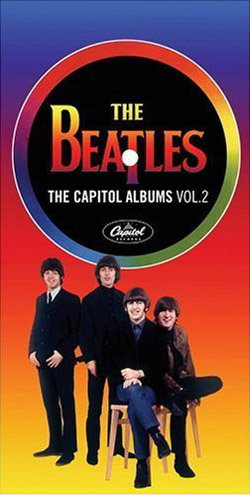 The first stereo mix of “The Word” became available on compact disc for the first time on the box set “The Capitol Albums, Vol. 2,” which was released on April 11th, 2006. The entire “Rubber Soul” album was included using the mixes Capitol had in their possession since 1965. On initial pressings of this set, Capitol mistakenly presented a "mono type-B" fold-down mono mix for the entire "Rubber Soul" album, which was a method that combined both the left and right channels of the stereo mix to create a mono mix. Therefore, the mono mix of "The Word" in this set was initially prepared in this way, the error being corrected on subsequent pressings. The first stereo mix of “The Word” became available on compact disc for the first time on the box set “The Capitol Albums, Vol. 2,” which was released on April 11th, 2006. The entire “Rubber Soul” album was included using the mixes Capitol had in their possession since 1965. On initial pressings of this set, Capitol mistakenly presented a "mono type-B" fold-down mono mix for the entire "Rubber Soul" album, which was a method that combined both the left and right channels of the stereo mix to create a mono mix. Therefore, the mono mix of "The Word" in this set was initially prepared in this way, the error being corrected on subsequent pressings.
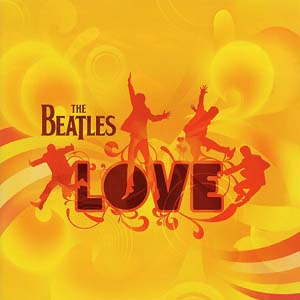 A very special version of the song was then released on November 20th, 2006, this being an inventive medley called “Drive My Car / The Word / What You’re Doing” from the compilation album “Love.” This double-platinum selling album, which reached #4 on the US Billboard album chart, featured the soundtrack to the popular Cirque du Soleil show of the same name. This track alone makes this album a “must have” for any Beatles fan. A very special version of the song was then released on November 20th, 2006, this being an inventive medley called “Drive My Car / The Word / What You’re Doing” from the compilation album “Love.” This double-platinum selling album, which reached #4 on the US Billboard album chart, featured the soundtrack to the popular Cirque du Soleil show of the same name. This track alone makes this album a “must have” for any Beatles fan.
 “The Beatles In Mono” was released on CD on September 9th, 2009, which contains the original 1965 mono mix of the song as well as the second stereo mix from 1965 (both remastered) as originally heard in Britain, only much crisper and clearer. The vinyl edition of this set was first released on September 9th, 2014. “The Beatles In Mono” was released on CD on September 9th, 2009, which contains the original 1965 mono mix of the song as well as the second stereo mix from 1965 (both remastered) as originally heard in Britain, only much crisper and clearer. The vinyl edition of this set was first released on September 9th, 2014.
Live Performances
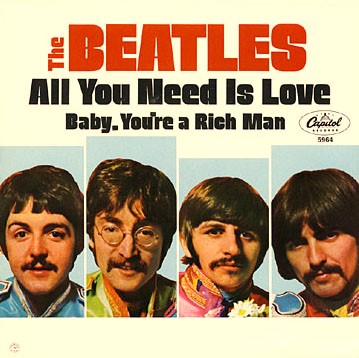 Upon examination of the arrangement used on this track, it seems quite apparent that The Beatles intended “The Word” to be a studio creation only. Therefore, they declined including the song in any of their live performances. Upon examination of the arrangement used on this track, it seems quite apparent that The Beatles intended “The Word” to be a studio creation only. Therefore, they declined including the song in any of their live performances.
However, McCartney gave a nod to the song by including a portion of it in a live medley with the appropriately titled "All You Need Is Love" during many dates of his "On The Run" tour, which ran from July 15th, 2011 (New York City) to November 29th, 2012 (Edmonton, Canada).
Conclusion
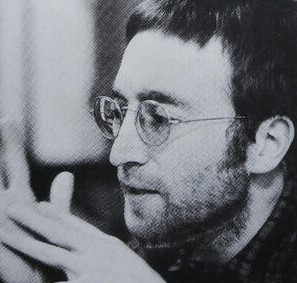 For someone who was to supposedly denounce Christianity a few months later, this song assuredly shows John for what his innermost intentions and desires were. Lennon's highly reported personal campaigns for peace in 1969 and the early '70s show their face for the first time in December of 1965 in this groundbreaking anthem about loving each other. The buzz-word was proclaimed here and the world took notice and ran with it. For someone who was to supposedly denounce Christianity a few months later, this song assuredly shows John for what his innermost intentions and desires were. Lennon's highly reported personal campaigns for peace in 1969 and the early '70s show their face for the first time in December of 1965 in this groundbreaking anthem about loving each other. The buzz-word was proclaimed here and the world took notice and ran with it.
Song Summary
“The Word”
Written by: John Lennon / Paul McCartney
-
Song Written: October / November, 1965
-
Song Recorded: November 10, 1965
-
First US Release Date: December 6, 1965
-
-
US Single Release: n/a
-
Highest Chart Position: n/a
-
British Album Release: Parlophone #PCS 3075 “Rubber Soul”
-
Length: 2:42
-
Key: D major
-
Producer: George Martin
-
Engineers: Norman Smith, Ken Scott
Instrumentation (most likely):
-
John Lennon - Lead Vocals, Rhythm Guitar (1961 Sonic Blue Fender Stratocaster)
-
Paul McCartney - Piano (1964 Challen upright 861834), Bass Guitar (1964 Rickenbacker 4001S), Harmony Vocals
-
George Harrison – Lead Guitar (1961 Sonic Blue Fender Stratocaster), Harmony Vocals
-
Ringo Starr – Drums (1964 Ludwig Super Classic Black Oyster Pearl), maracas
-
George Martin - Harmonium (Mannborg)
Written and compiled by Dave Rybaczewski
|
IF YOU WOULD LIKE TO MAKE A DONATION TO KEEP THIS WEBSITE UP AND RUNNING, PLEASE CLICK BELOW!
Sign Up Below for our MONTHLY BEATLES TRIVIA QUIZ!
Sign Up Below for our MONTHLY BEATLES TRIVIA QUIZ!
|